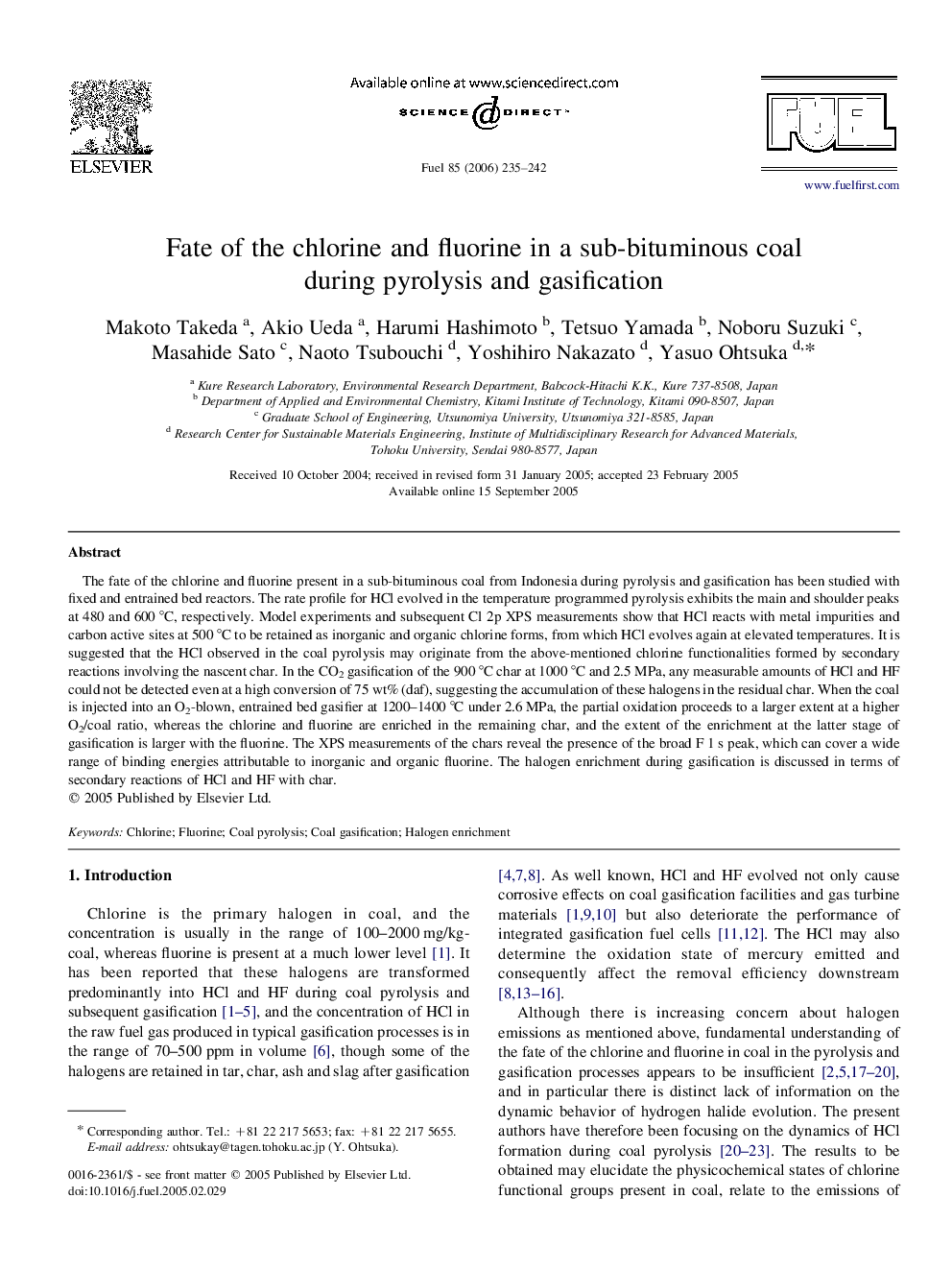| Article ID | Journal | Published Year | Pages | File Type |
|---|---|---|---|---|
| 208748 | Fuel | 2006 | 8 Pages |
The fate of the chlorine and fluorine present in a sub-bituminous coal from Indonesia during pyrolysis and gasification has been studied with fixed and entrained bed reactors. The rate profile for HCl evolved in the temperature programmed pyrolysis exhibits the main and shoulder peaks at 480 and 600 °C, respectively. Model experiments and subsequent Cl 2p XPS measurements show that HCl reacts with metal impurities and carbon active sites at 500 °C to be retained as inorganic and organic chlorine forms, from which HCl evolves again at elevated temperatures. It is suggested that the HCl observed in the coal pyrolysis may originate from the above-mentioned chlorine functionalities formed by secondary reactions involving the nascent char. In the CO2 gasification of the 900 °C char at 1000 °C and 2.5 MPa, any measurable amounts of HCl and HF could not be detected even at a high conversion of 75 wt% (daf), suggesting the accumulation of these halogens in the residual char. When the coal is injected into an O2-blown, entrained bed gasifier at 1200–1400 °C under 2.6 MPa, the partial oxidation proceeds to a larger extent at a higher O2/coal ratio, whereas the chlorine and fluorine are enriched in the remaining char, and the extent of the enrichment at the latter stage of gasification is larger with the fluorine. The XPS measurements of the chars reveal the presence of the broad F 1 s peak, which can cover a wide range of binding energies attributable to inorganic and organic fluorine. The halogen enrichment during gasification is discussed in terms of secondary reactions of HCl and HF with char.
